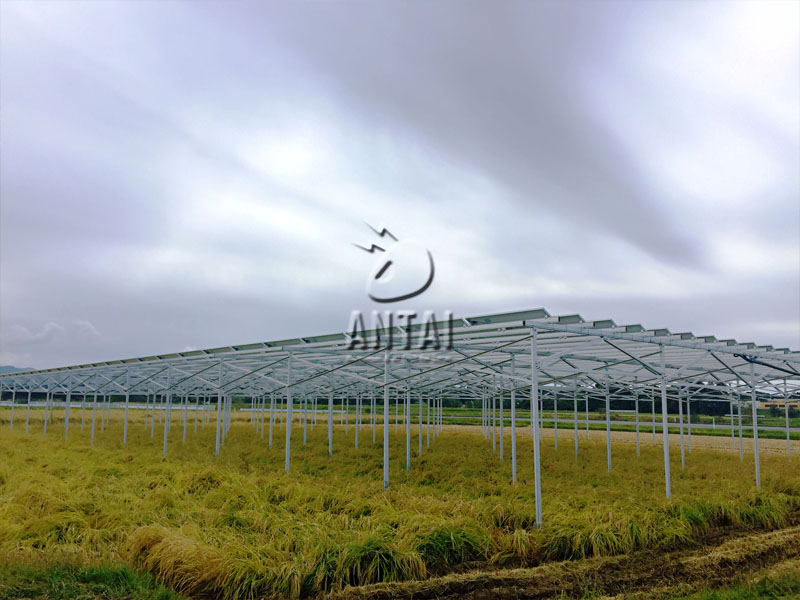The Economic Advantages of Agrivoltaics for Farmers
August 11, 2025
Agrivoltaics is an innovative approach that combines agricultural practices with solar energy production through the use of agrivoltaic panels. This method not only optimizes land usage but also provides significant economic benefits for farmers. In this article, we will explore the various economic advantages agrivoltaic panels bring to the agricultural sector and how they contribute to sustainability.

One of the most compelling economic advantages of agrivoltaic panels is the potential for increased revenue streams. By installing solar panels alongside crops, farmers can diversify their income sources. While traditional farming relies solely on crop yields, integrating agrivoltaic systems allows farmers to generate electricity and sell it back to the grid. This dual production model can significantly boost profitability, particularly during periods of low crop yield due to adverse weather conditions or market fluctuations.
Moreover, governments and utility companies often provide incentives for renewable energy generation, such as tax credits and grants, further enhancing revenue opportunities for farmers adopting agrivoltaic panels. These financial incentives can offset initial installation costs, making the transition to agrivoltaic systems more financially viable.
Agrivoltaic panels also offer substantial cost savings on energy expenses. By generating electricity on-site, farmers can power their operations without relying heavily on external energy sources. This independence from fluctuating energy prices not only leads to stable operating costs but also enables farmers to allocate resources more efficiently across their business.
Furthermore, agrivoltaic systems can help in reducing electric bills, which is especially beneficial for energy-intensive agricultural processes like irrigation, greenhouse climate control, and refrigeration. The ability to produce clean energy effectively reduces dependency on fossil fuels, resulting in lower carbon footprints and operational expenses.
Research has shown that agrivoltaic panels can enhance crop yields by providing shade and improving microclimate conditions for certain crops. The partial shading created by the panels can reduce heat stress in plants, leading to better growth and productivity. This combination of solar energy generation and crop cultivation creates a sustainable agricultural ecosystem, offering farmers more resilient production capabilities.
Additionally, with changing climate conditions affecting traditional farming practices, agrivoltaics provides a strategic advantage by helping farmers adapt to these changes. The synergy between solar energy and agriculture not only fosters greater food security but also ensures long-term sustainability for farming operations.
In summary, agrivoltaic panels present a unique opportunity for farmers to enhance their economic stability through diversified revenue streams, cost savings on energy, and improved crop yields. By integrating solar energy generation with agricultural practices, farmers can create a more resilient and sustainable business model that meets the challenges of modern agriculture.
At Antaisolar, we proudly offer Agri-PV Solutions, a sustainable approach that combines PV power generation with agricultural production. Our Agri-PV solution features a stable structure and easy installation, adaptable to different agricultural environments, such as greenhouses and orchards, providing a double guarantee for agricultural development and clean energy production.

Increased Revenue Streams
One of the most compelling economic advantages of agrivoltaic panels is the potential for increased revenue streams. By installing solar panels alongside crops, farmers can diversify their income sources. While traditional farming relies solely on crop yields, integrating agrivoltaic systems allows farmers to generate electricity and sell it back to the grid. This dual production model can significantly boost profitability, particularly during periods of low crop yield due to adverse weather conditions or market fluctuations.
Moreover, governments and utility companies often provide incentives for renewable energy generation, such as tax credits and grants, further enhancing revenue opportunities for farmers adopting agrivoltaic panels. These financial incentives can offset initial installation costs, making the transition to agrivoltaic systems more financially viable.
Cost Savings on Energy
Agrivoltaic panels also offer substantial cost savings on energy expenses. By generating electricity on-site, farmers can power their operations without relying heavily on external energy sources. This independence from fluctuating energy prices not only leads to stable operating costs but also enables farmers to allocate resources more efficiently across their business.
Furthermore, agrivoltaic systems can help in reducing electric bills, which is especially beneficial for energy-intensive agricultural processes like irrigation, greenhouse climate control, and refrigeration. The ability to produce clean energy effectively reduces dependency on fossil fuels, resulting in lower carbon footprints and operational expenses.
Enhanced Crop Yields and Resilience
Research has shown that agrivoltaic panels can enhance crop yields by providing shade and improving microclimate conditions for certain crops. The partial shading created by the panels can reduce heat stress in plants, leading to better growth and productivity. This combination of solar energy generation and crop cultivation creates a sustainable agricultural ecosystem, offering farmers more resilient production capabilities.
Additionally, with changing climate conditions affecting traditional farming practices, agrivoltaics provides a strategic advantage by helping farmers adapt to these changes. The synergy between solar energy and agriculture not only fosters greater food security but also ensures long-term sustainability for farming operations.
Conclusion
In summary, agrivoltaic panels present a unique opportunity for farmers to enhance their economic stability through diversified revenue streams, cost savings on energy, and improved crop yields. By integrating solar energy generation with agricultural practices, farmers can create a more resilient and sustainable business model that meets the challenges of modern agriculture.
At Antaisolar, we proudly offer Agri-PV Solutions, a sustainable approach that combines PV power generation with agricultural production. Our Agri-PV solution features a stable structure and easy installation, adaptable to different agricultural environments, such as greenhouses and orchards, providing a double guarantee for agricultural development and clean energy production.
end
